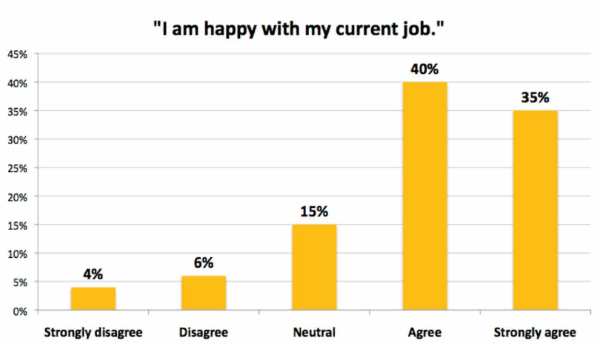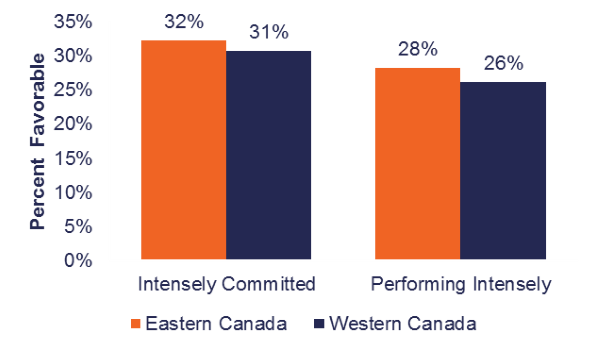New challenges to workforce retention in the aviation industry
The aviation industry is also feeling the effects of the widespread movement in which large numbers of people are leaving their jobs. Of particular concern in business aviation is the lure of airlines, many of which currently offer large signing bonuses and the promise of lengthy careers, as well as the potential for rapid advancement.
Pilots moving to airlines from business aviation believe they are getting in on the ground floor of a hiring frenzy. Despite the often-cyclical nature of the airline industry, pilots still believe they will be at the same airline for 20-30 years and then retire. It is difficult for business aviation to compete against that mindset, even if history shows airlines must often reorganize and furlough employees.
While “grass is greener on the other side” thinking will always play a role in workforce retention, with compensation among the top concerns, considerations beyond the office, hangar or flight deck often play a significant role in someone’s decision to stay or leave a job.
Measuring employee engagement
BI WORLDWIDE (BIW) Canada surveyed 1,000 Canadian employees and asked them “Are you happy with your current job?”
Most employees either love their jobs or like them well enough to ably perform them week in and week out. In fact, the majority of employees are happy at work.

75% of employees agree with the statement to some degree. These new happiness numbers indicate that people are more connected with their work than commonly assumed. Happiness is hardly an impossible-to-attain aspiration for companies that pay attention to the needs of their employees.
Yet some consultants would dismiss the importance of these results because they consider employee happiness irrelevant, if not counterproductive. Some actively argue against happiness. However, the overlap between those who are happy and those who are engaged is so large that there simply are no appreciable numbers of people who are happy at work and not engaged, or, conversely, engaged and not happy.
We also asked the same number of Canadian employees.
What percentage of your full effort are you currently delivering at work?
On average, nearly 50% of Canadians report that they put in their full effort. Only 3% of Canadian employees report that they invest only half of their effort or less at work.
The levels of employee engagement can be measured by their level of intensity to perform (i.e. how hard they work for customers and their active interest in improving the way they work) and by the level of commitment to their employer.

While employees’ intensity of performance is equally high in eastern and Western Canada, Eastern Canadians are slightly more committed to their company, on average. More Western Canadians answered neutrally.
The leader’s role within the aviation industry
Airline employees who are recognized regularly work smarter and more effectively. They better understand what is expected of them and will work diligently to meet or exceed those expectations. As airlines have redeployed workforces and had to economize and reassess their business plans, many are more aware of their personal impact in driving business results.
Your best employees are eager to accomplish something incredible together. They want to be proud of the work they are doing. Challenge, rally, and support them wholeheartedly and you will be struck by what they can do. Those that have challenging goals are more than twice as inspired as those that do not and feel a greater sense of belonging at work. As a leader, you can help your employees clarify how they can achieve those goals.
For example, you might ask an aircraft maintenance technician:
- “What are your essential responsibilities?”
- “What are the outcomes you are supposed to achieve?”
- “How do you contribute to making this a great place to work?”
- “How are you creating satisfied customers for the organization?”
Metrics and measurements should be focused on the goals and objectives in the employee engagement plan.
Is the ‘great resignation’ underway?
An Ipsos study revealed that 43% of Canadians plan to change their jobs in the coming year. Research conducted by Indeed suggests that 27% of Canadian employees are actively looking for new jobs and 47% reported they weren’t actively searching, but said they were open to new opportunities today or in the future.
Right now, airlines across the globe are struggling with staff shortages both on the ground and in the air.
Why is this occurring?
Perhaps airlines are not keeping up with expectations on overall work-life experiences. We all have different priorities. There are those who might be motivated solely by money, while others might be motivated by the ability to be home for his/her kid’s ballgame, and others may prioritize growth opportunities.
At BIW Canada, we continually conduct research and benchmark studies to uncover the best ways to engage employees.
How to improve employee engagement in the aviation industry
Let’s explore 12 employee engagement strategies that can help you to strengthen engagement and organizational maturity for each of the New Rules of Engagement®.
While we have used the term Rules, let’s think of these as 12 attributes, employee engagement tactics, or perhaps best practice guidelines for a company or a leader.
1. Make it personal
More than ever, great leadership involves an intense appreciation of each unique individual—understanding each employee’s abilities, aspirations and how they work best. Success on this rule is critical to achieving all the others.
2. Make money a non-issue
Money isn’t everything. It only gets you so far. Other areas such as belonging, learning and development, meaning and challenge consistently contribute more to the engagement equation. Yet, companies that mishandle the emotional aspects of money run the risk of over-amplifying compensation.
Money may attract airline employees to the front door, but something else must keep them from going out the back. A compensation system is foundational and needs to be in order, yet a paycheque isn’t among the top drivers of engagement for organizational differentiation.
Particularly in the face of uncertain times, the most successful companies will continue to look beyond the transactional nature of compensation and focus on a more effective and enduring strategy of identifying and operationalizing what the workforce values.
3. Help them thrive
Never have work, personal life and health been so inextricably linked. Protecting employees’ holistic well-being doesn’t just reduce costs, it invigorates the employees and the business.
4. Realize their potential
In lieu of permanent placements and pensions, employers are expected to provide growth opportunities. Offering opportunities for airline staff to be successful and reach their potential will grow your top talent … and your bottom line.
5. Foster belonging
Employees cannot fully commit to a company without a sense of connectedness and belonging. Fostering belonging within an airline, within the team and with the work itself is critical for employee performance and enrichment.
6. Be boldly transparent
Gone are the days of top-down leadership. The best ideas may come from employees, so listen with an open mind and use those ideas to shape the vision for the future and communicate openly with the organization.
7. Give it meaning
People need to be part of something bigger than just a job and a paycheque. Meaning drives higher performance.
8. See their future
What people do today is largely motivated by where they think it will take them in the future. Organizations that are intentional about helping employees on the ground and in the air to chart their future will be rewarded with those people’s best work.
9. Magnify their success
While the dynamics of the workplace may continue to shift, the mantra “recognize them when they do it well” remains a constant in the engagement equation. Simply put, what gets recognized gets repeated. Formally acknowledging and sharing contributions and accomplishments ensures behaviours will be multiplied.
10. Unite them
People are usually willing to “take one for the team,” but only if they feel supported and valued. It is important to create conditions that foster strong collaboration.
11. Let them lead
True empowerment is not just a place to voice ideas, but also having those ideas seriously weighed and considered. It is not just being told to take a risk, but also being supported when the risk doesn’t go as planned. Empowering this way will ignite inspiration within the organization.
12. Challenge them
Your best people are itching to accomplish something incredible together. Challenge, rally and support your people and you will be struck by what they can do.
